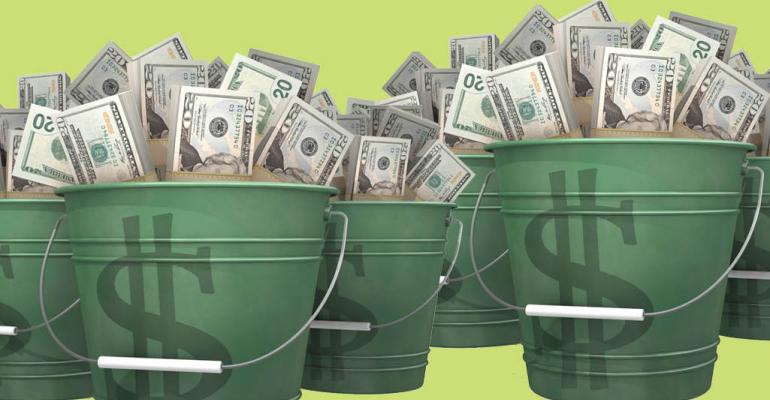Advanced Disposal posted an 8.9 percent growth in revenues while Casella's year-our-year increase was 6.0 percent.

Executives from publicly-traded solid waste firms Advanced Disposal Services and Casella Waste Systems outlined the headwinds each company faced during the third quarter. In both cases, ripple effects from China’s moves on the waste it imports had effects on recycling operations. Meanwhile, Advanced Disposal faced some further challenges from hurricane and healthcare costs. While Casella experienced higher leachate costs due to heavy rainfalls early in the quarter.
Those heightened costs, however, did not offset healthy revenue gains for both companies, with each reported strong year-over-year growth in a number key metrics.
Advanced Disposal Grows Revenues 8.9 Percent
Revenues for the quarter for Ponte Vedra, Fla.-based Advanced Disposal Inc. amounted to $392.7 million, up from $360.6 million in the same period last year, an 8.9 percent year-over-year rise.
Net income during third quarter 2017 was $3.5 million compared with $3.8 million in the third quarter of 2016. Adjusted net income in third quarter 2017 was $13.9 million, an increase of $3.2 million year-over-year.
“We’re making great progress for the organization,” Advanced Disposal CEO Richard Burke said during a conference call with investors and analysts. “We’re optimistic for what the future holds.”
By focusing on market selection, organic growth, accretive acquisitions, managing costs and being disciplined with capital investments, Burke said the company will continue to generate strong cash flow for investors.
In terms of the headwinds the company faced, it recorded $3.7 million in unforeseen costs. This was due to a variety of factors, including costs tied to Hurricane Irma; high healthcare insurance claims costs; disposal, leachate and sulfate treatment costs and a decline in commodity prices late in the quarter.
Although most of Advanced Disposal’s recycled materials are sold domestically, China’s moves have had the ripple effect of driving commodities prices globally.
In terms of health insurance, Burke said the company is shifting its offerings in 2018, which should address the issues it faced in this quarter. And on the leachate front, the firm has invested some capital to install pre-treatment facilities so it can discharge its leachate at a cheaper rate going forward.
Hurricane Irma had a more negative effect on Advanced Disposal than storms did for other haulers because it doesn’t own the disposal sites in the affected markets.
“Where you make money in a hurricane is owning disposal sites,” Burke said. “Unfortunately that’s not our model here. We’re disposal neutral. That’s why [we didn’t have] the same offsetting revenue that our peers have had.”
Burke further outlined that part of its contracts mandate that it pick up one to three yards of debris in waste per week, adding to its collection costs. Typically, storm debris collectors come into markets and help in the wake of storms. But the back-to-back events in Texas and Florida meant that many storm debris specialists were backlogged in Texas, leaving a heavier burden on local haulers than would otherwise be the case.
One other blip for the firm was that reported price rose just 0.2 percent in the quarter, below that roughly 2.0 percent average it has posted in quarters for the past two years.
Burke attributed the lower figure to the company defending its business in some of its markets.
“Let’s not lose sight of the fact that looking at price in one quarter is a narrow lens,” Burke said. “I like to look at eight quarters. Price over two years will tell you if you’re disciplined. … [We’re] running 60 to 70 basis points north of CPI for the last two years. Defending our commercial business in primary markets matters. We think it’s important. We are internalizing that waste to our landfills.”
Other highlights for the quarter:
In breaking down its revenues, collections contributed $259.1 million (up from $247.7 million), disposal accounted for $145.3 million (up from $137.3 million) and sale of recyclables generated $10.0 million (up from $6.6 million). Fuel and environmental fees and other revenue contributed $26.9 million and $28.0 million, respectively.
Total yield amounted to 1.3 percent, down from 1.9 percent in 2016. That included average yield of 0.2 percent for the quarter (down from 2.3 percent in 2016) recycling at 0.9 percent (up from 0.2 percent) and fuel fee revenues of 0.2 percent (compared with -0.6 percent in 2016).
Organic volume growth was 3.4 percent for the quarter and is now up 0.8 percent for the first nine months of 2017. That compares with -3.2 percent in the third quarter of 2016 and -1.2 percent for the first nine months of 2016.
Acquisitions added 4.8 percent, highlighted by the first quarter purchase of CGS Services Inc. Year-to-date Advanced Disposal has completed 12 tuck-in acquisitions.
Organic price and volume growth of 3.6 percent was led by strong disposal volume.
Adjusted EBITDA amounted to $112.3 million up $3.2 million year-over-year despite impact from storm, start-up and other unforeseen costs.
Year-to-date adjusted free cash flow increased 23 percent to $111.6 million.
Casella Exceeds Expectations Despite Hit on Recycling
For the quarter, Rutland, Vt.-based Casella Waste Systems Inc. posted revenues of $160.3 million, up $9.1 million, or 6.0 percent, from the same period in 2016.
Casella said revenue growth was mainly driven by robust collection, disposal and recycling commodity pricing; higher volumes; and the roll-over impact from acquisitions; partially offset by lower organics volumes.
"The progress we have made on our strategies clearly drove positive financial results in the third quarter," John W. Casella, chairman and CEO of Casella Waste Systems, said in a statement. "Our disciplined solid waste pricing programs continued to add value, with landfill pricing up 3.5 percent, and residential and commercial pricing up 3.4 percent. This strong pricing was coupled with 1.3 percent solid waste volume growth, and 1.0 percent solid waste revenue growth from acquisitions, as we began to ramp up our acquisition activity."
A challenge for the company in the quarter included leachate expenses, which were up 73 percent year-over-year due to high rainfall.
Casella also reported an increase of $700,000 in labor costs on recycling. The firm is investing in labor to in order to lower contamination rates in its recycled materials.
“Our quality was pretty high quality, but we are bring it up more,” John Casella said during a call with investors and analysts. “We were at 3 percent to 4 percent contamination, but we are trying to bring it even lower. … The quality standards set by China are not going to be met by anyone. Nonetheless, the additional labor will increase quality standards.”
Casella also experienced a hit because of how it structures its municipal contracts. It uses the previous month’s average commodity price to determine revenue or cost sharing with municipalities.
With average commodity revenue per ton dropping 40 percent from September to October, it meant it shared revenue to municipalities on average prices for September that were quite different from what it selling commodities for in October. Over the long term, the costs offset, but large swings like the one in October can affect the firm.
“We shared revenue based on last month’s rates while we sold commodlites at far lower rates. … Going forward will see an offset.
Other highlights from the firm’s results:
In looking at its lines of business, solid waste operations amounted to $118.6 million, up from $112 million in 2016. Broken down, that included collection revenues of $70.0 million (compared to $65.6 million in 2016) and disposal amounted to $44.9 million (up from $43.4 million in 2016). Power generation and processing contributed $1.2 million and $2.5 million, respectively.
Organics accounted for $9.7 million (down from $10.3 million in 2016), customer solutions contributed $15.6 million (up from $13.9 million) and recycling amounted to $16.4 million (up from $14.4 million).
In terms of the total company revenue growth of 6.0 percent year-over-year, solid waste price accounted for 2.3 percent (consisting of collections, 1.4 percent and disposal, 0.9 percent). Solid waste volume contributed 0.9 percent (0.7 percent collections, 0.1 percent disposal and 0.1 percent processing). Acquisitions, net divestures, contributed 0.8 percent. Organics revenue was down 0.4 percent. Customer solutions was up 1.1 percent. And total recycling contributed 1.3 percent (consisting of 1.2 percent on price and 0.1 percent on volume.)
Net income attributable to common stockholders was $12.1 million as compared to net income attributable to common stockholders of $7.5 million in 2016. Adjusted net income attributable to common stockholders was $13.1 million for the quarter compared to $7.7 million in the third quarter a year ago.
Operating income was $18.3 million for the quarter, as compared to operating income of $17.4 million for the same period in 2016. Adjusted operating income was $19.0 million for the quarter, up $1.7 million from the same period in 2016.
Adjusted EBITDA was $39.5 million for the quarter, up $2.4 million from the same period in 2016.
Net cash provided by operating activities was $39.1 million for the quarter, as compared to $20.5 million for the same period in 2016.
Free cash flow was $20.0 million for the quarter, as compared to $5.1 million for the same period in 2016. Normalized free cash flow was $20.9 million for the quarter, as compared to $5.1 million for the same period in 2016.
About the Author(s)
You May Also Like




